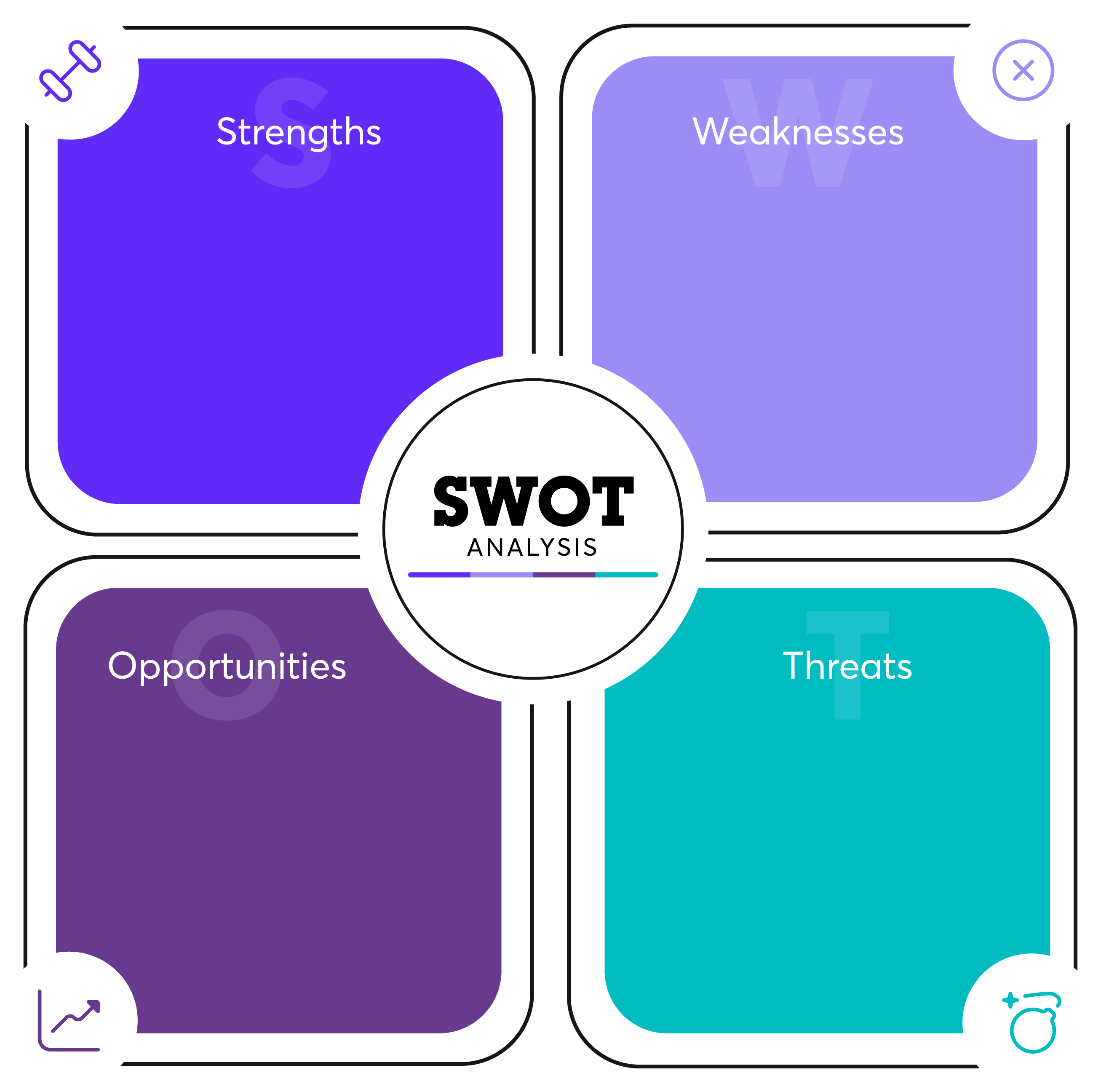In the dynamic landscape of business, success often hinges on strategic foresight and adaptability. Enter the SWOT analysis – a fundamental tool that empowers organizations to evaluate their strengths, weaknesses, opportunities, and threats. But what exactly is a SWOT analysis, and when should you deploy it? Let’s delve into this essential framework and uncover its myriad applications in steering businesses towards success.
What is a SWOT Analysis? (And When To Use It)
A SWOT analysis is a strategic planning technique used to identify and understand the Strengths, Weaknesses, Opportunities, and Threats affecting a business or project. By systematically evaluating these factors, organizations can gain valuable insights into their internal capabilities and external environment.
Exploring the Components of a SWOT Analysis
- Strengths: Unveiling Your Competitive Edge
- Weaknesses: Addressing Areas for Improvement
- Opportunities: Capitalizing on Growth Prospects
- Threats: Mitigating Risks and Challenges
Unveiling Your Competitive Edge: Strengths
In the realm of business strategy, recognizing and capitalizing on strengths is paramount. Strengths encompass the internal attributes and resources that confer a competitive advantage to an organization. These could include a strong brand reputation, innovative products or services, robust financial resources, or a talented workforce. Conducting a thorough analysis of strengths enables businesses to leverage their unique capabilities and differentiate themselves in the market.
Addressing Areas for Improvement: Weaknesses
Just as important as identifying strengths is acknowledging weaknesses. Weaknesses refer to internal factors that hinder an organization’s performance or competitiveness. These may encompass limited resources, outdated technology, inadequate skills, or inefficient processes. By candidly assessing weaknesses, businesses can proactively address areas for improvement and fortify their operations.
Capitalizing on Growth Prospects: Opportunities
Opportunities represent external factors that can be leveraged to drive growth and success. These could arise from emerging market trends, technological advancements, changes in consumer preferences, or untapped market segments. Identifying and seizing opportunities allows businesses to expand their market reach, diversify their offerings, or enhance their competitive position.
Mitigating Risks and Challenges: Threats
In the ever-evolving business landscape, threats abound in various forms. These may include economic downturns, intensified competition, regulatory changes, technological disruptions, or shifting consumer behaviors. Recognizing and mitigating threats is essential to safeguarding against potential risks and ensuring the resilience of the organization.
Leveraging the Power of SWOT Analysis
The beauty of a SWOTs analysis lies in its versatility and applicability across diverse contexts. Whether you’re a startup seeking to carve out a niche in the market or an established corporation navigating industry upheavals, the insights gleaned from a SWOT analysis can inform strategic decision-making at every turn.
When to Use a SWOT Analysis

Now that we’ve grasped the essence of a SWOTs analysis, the pertinent question arises: When should you employ this strategic tool? The answer lies in various scenarios where a comprehensive assessment of internal and external factors is warranted:
1. Strategic Planning and Business Development
2. Product or Service Launch
3. Market Expansion or Diversification
4. Performance Evaluation and Improvement
5. Merger or Acquisition Consideration
6. Crisis Management and Risk Mitigation
FAQs
What are some common mistakes to avoid when conducting a SWOT analysis?
- Neglecting to involve key stakeholders in the process.
- Failing to prioritize or validate SWOT factors.
- Overlooking external market dynamics or emerging trends.
How frequently should a SWOT analysis be revisited?
Regular reassessment is advisable, with many businesses opting for quarterly or annual reviews to stay attuned to evolving market conditions.
Can SWOT analysis be applied to personal development?
Absolutely! SWOTs analysis can provide valuable insights for personal growth by identifying strengths to leverage and areas for improvement to address.
Is it possible to conduct a SWOT analysis for a non-profit organization?
Certainly! Non-profits can benefit immensely from SWOT analysis in strategic planning, resource allocation, and stakeholder engagement.
What role does creativity play in SWOT analysis?
Creativity is key in brainstorming innovative strategies to capitalize on strengths and opportunities while mitigating weaknesses and threats.
How can I ensure actionable outcomes from a SWOT analysis?
Focus on translating SWOT insights into concrete action plans with clear objectives, timelines, and accountability measures.
Conclusion
In essence, a SWOT analysis serves as a compass in the journey of strategic decision-making, guiding businesses towards their desired objectives while navigating the complexities of the competitive landscape. By harnessing the power of this time-tested framework, organizations can gain a holistic understanding of their internal dynamics and external environment, paving the way for informed and effective strategies. So, embrace the SWOTs analysis as your ally in unlocking success and propelling your endeavors to new heights.







Be First to Comment